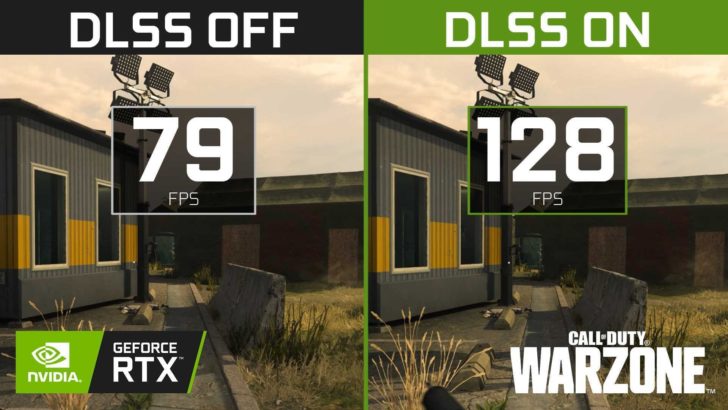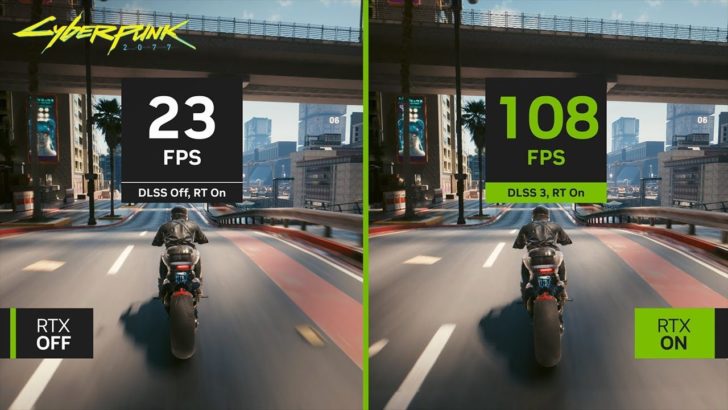Ever dreamed of playing your favorite PC games with stunning graphics and blazing-fast frame rates? Enter the world of DLSS technology, an AI-driven solution that revolutionizes gaming performance and visuals. In this comprehensive guide, we’ll explore the intricacies of DLSS, its evolution, and how it stacks up against competing technologies. Get ready for a game-changing experience!
Table of Contents
Key Takeaways
DLSS Technology leverages deep learning and Tensor Cores to revolutionize gaming experiences by enhancing graphics quality while improving performance.
It has evolved from DLSS 1.0 through 3.0, offering increased performance and improved image quality with a range of modes and settings for optimization.
To enable it, ensure you have an RTX GPU series 20 or newer, updated drivers & video RAM as well as Hardware Accelerated GPU Scheduling enabled in your OS before enabling DLSS in game settings for optimized visuals/performance
DLSS Technology Explained

Nvidia’s innovative technology, Nvidia DLSS, or Deep Learning Super Sampling, employs deep learning and Tensor cores in RTX GPUs to enhance graphics quality and boost performance in compatible games.
Thanks to artificial intelligence, DLSS enhances graphics quality while boosting frame rates, thereby revolutionizing your gaming experience in supported titles.
Deep Learning Super Sampling
At its core, Deep Learning Super Sampling is all about rendering games at a lower resolution and then using AI to upscale the image. This results in higher frame rates and better visuals in DLSS-supported games.
The secret sauce lies in its image processing algorithm, which utilizes neural rendering, machine learning, and ray tracing to upscale the image and maintain a higher image quality that is often lost with other upscaling techniques. By doing so, it produces a higher resolution image without compromising on image clarity.
Tensor Cores
Tensor Cores play a vital role in DLSS technology. Found in Nvidia RTX GPUs, these specialized cores accelerate AI computations, enabling the magic of DLSS to unfold. By executing operations such as:
fused multiply-add calculations
matrix multiplication
convolution
pooling
Tensor Cores significantly enhance AI computations in DLSS, thereby elevating performance and graphics quality.
The Evolution of DLSS: From 1.0 to 3.0
DLSS has come a long way since its inception, with each version offering considerable improvements in performance and image quality. Let’s take a stroll down memory lane and explore the evolution of this groundbreaking technology, from DLSS 1.0 to the latest and greatest, DLSS 3.0.
DLSS 1.0
DLSS 1.0 marked the beginning of a revolution in gaming visuals and performance. Released in February 2019, this first iteration provided improved graphics but came with some limitations in supported GPUs, settings, and resolutions. Despite these restrictions, DLSS 1.0 laid the groundwork for future versions, showcasing the potential of AI-driven upscaling in games like Rise of the Tomb Raider and Shadow of the Tomb Raider.
DLSS 2.0
DLSS 2.0 elevated the technology, providing:
Higher frame rates
Sharpened visuals
Blur trails
Augmented performance
Sharper image quality
Furthermore, DLSS 2.0 simplified the process for developers to incorporate DLSS into their games, making it easier for gamers to enjoy the benefits of this cutting-edge technology.
With DLSS 2.0, titles like Cyberpunk 2077 and Death Stranding saw a new level of performance and visual fidelity in the world of PC games.
DLSS 3.0
The latest iteration, DLSS 3.0, further refines the technology by utilizing AI-generated frames for even higher frame rates. This version incorporates AI-driven frame generation and Reflex technology, which reduces latency unlike prior versions.
However, DLSS 3.0 also comes with some limitations, such as latency and quality issues that may be noticeable in certain gaming scenarios.
DLSS Modes and Settings
DLSS offers a plethora of modes and settings to suit every gamer’s needs, allowing you to strike the perfect balance between performance and image quality in dlss games. Let’s delve into the various available modes and analyze their impact on your gaming experience.
Quality Mode
Quality Mode is the go-to choice for gamers who prioritize image quality above all else. This mode delivers the highest level of detail and sharpness, providing a breathtaking gaming experience. For example, in Death Stranding, Quality Mode significantly improves visuals at 1440p compared to native rendering, maintaining most of the detail while softening some of the jagged edges of the native render.
Balanced Mode
Balanced Mode strikes a happy medium between performance and image quality, making it suitable for most gaming scenarios. By rendering at a lower resolution than the native resolution and applying AI upscaling techniques, Balanced Mode offers a significant performance enhancement without compromising much on visual quality.
Performance Mode
For those who want to squeeze every last frame out of their hardware, Performance Mode is the answer. This mode focuses on maximizing frame rates at the cost of some visual fidelity. Performance Mode offers the following benefits:
Renders at an even lower resolution
Applies AI upscaling for smooth gameplay
Increases frame rates
Ideal for competitive gamers or systems with lower-end hardware.
Comparing DLSS with Competing Technologies

DLSS faces stiff competition from other supersampling technologies, such as AMD’s FSR and Intel’s XeSS. Let’s scrutinize these alternatives, assessing their pros and cons in comparison to DLSS.
AMD FSR
AMD FSR, or FidelityFX Super Resolution, is an open-source alternative to DLSS that works with both AMD and Nvidia graphics cards. Although FSR provides a substantial performance boost and preserves image quality, it lacks the ability to create new frames, which may result in slightly lower performance improvements compared to DLSS.
Intel XeSS
Another competitor, Intel XeSS, offers gamers an AI-enhanced upscaling solution for improved gaming experiences. However, its performance and image quality improvements may not be as significant as those offered by DLSS.
Despite this, XeSS remains a viable option for those looking to enhance their gaming experience.
DLSS in Action: Real-World Gaming Performance
As the saying goes, the proof of the pudding is in the eating. Let’s evaluate DLSS’s real-world performance across popular games to highlight the real benefits this technology brings to the table.
Cyberpunk 2077
In the visually stunning world of Cyberpunk 2077, DLSS can be a game-changer. By enabling DLSS, players can experience improved frame rates and enhanced visuals, making the game more enjoyable on a wide range of hardware.
With DLSS Quality Mode enabled, for example, the frame rate can jump from 27 FPS to a staggering 61 FPS, providing a buttery-smooth gaming experience.
Hitman 3
Hitman 3 also reaps the rewards of DLSS technology. This stealthy assassination game benefits from:
Noticeable performance gains
Graphics fidelity improvements
Higher frame rates
More detailed visuals
With DLSS enabled, players can truly immerse themselves in the role of Agent 47, making the game more enjoyable and immersive.
Microsoft Flight Simulator 2020
Soaring through the skies in Microsoft Flight Simulator 2020 is even more breathtaking with DLSS enabled. This visually demanding game sees significant performance gains, especially in CPU-limited scenarios.
With DLSS Quality Mode activated, frame rates can nearly double, providing a smoother and more enjoyable flight experience for virtual pilots.
Limitations and Drawbacks of DLSS
Despite the numerous advantages of DLSS, we must also consider its limitations and drawbacks. Some users may experience latency issues or encounter visual artifacts, such as softness, blurriness, or flickering. Additionally, DLSS support is limited to specific games and requires compatible hardware, making it inaccessible to some gamers.
How to Enable and Configure DLSS
If you’re eager to utilize DLSS technology in your gaming setup, make sure you have the following:
A GeForce RTX graphics card from the 20 series or newer
Updated GPU drivers
Adequate video RAM
Hardware-Accelerated GPU Scheduling enabled in your operating system.
Once your system meets these requirements, simply enable DLSS in your game’s settings and choose the desired mode to optimize performance and image quality based on your preferences.
Summary
In conclusion, Nvidia’s DLSS technology is a groundbreaking solution that combines the power of AI and Tensor cores to revolutionize gaming performance and visuals. Whether you’re exploring the streets of Night City in Cyberpunk 2077 or navigating the skies in Microsoft Flight Simulator 2020, DLSS has the potential to elevate your gaming experience to new heights. So, buckle up, and get ready to enjoy the future of gaming with DLSS!
Frequently Asked Questions
What is DLSS technology?
DLSS is a new image rendering technology developed by NVIDIA which uses deep learning to render a higher-resolution version of an original lower resolution image. It increases game performance by utilizing AI tensor cores to upscale the result, delivering best-in-class image quality and improved frame rates.
Is DLSS better than RTX?
DLSS is a powerful feature of RTX GPUs, providing enhanced visuals and increased performance. It is the best of both worlds and is likely the better option over standard RTX.
Is DLSS a CPU or GPU?
DLSS is a technology that reduces the load on the GPU and increases the load on the CPU, making it a CPU-focused solution.
What are the differences between DLSS Quality Mode, Balanced Mode, and Performance Mode?
DLSS Quality Mode is tailored for optimal image quality, Balanced Mode offers a balance between performance and visual fidelity, while Performance Mode focuses on maximizing frame rates.
What are the system requirements for enabling and configuring DLSS?
To enable and configure DLSS, you’ll need a GeForce RTX graphics card from the 20 series or newer with updated GPU drivers, sufficient video RAM, and Hardware-Accelerated GPU Scheduling enabled in the OS.









